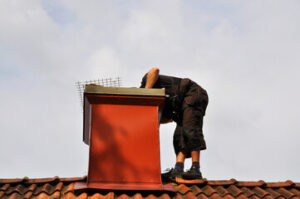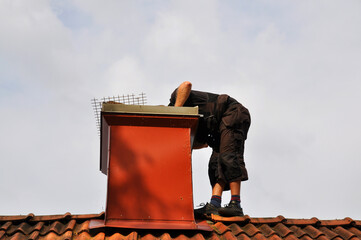Chimney Sweeps Charleston SC are professionals who clean ash and other debris from a chimney. A chimney is a long, straight pipe filled with hot wood or coal that creates a draught when air passes through. This draught is created by the pressure differential created by the hot gas or wood in the chimney. The chimney may be straight or have many bends.
As technology advanced, chimney sweeps began to specialize in different types of chimney cleaning. Their specialty was in cleaning fireplaces and fireplace chimneys, but there were also more modern chimney cleaning methods available, including gas. These chimney cleaning methods helped ensure the safety of both people and property.
Today’s chimney sweeps are highly trained professionals who help homeowners maintain safe heating, stoves, and flues. They adhere to strict ethical and educational standards. They also have a lot of training to ensure their work is up to standard. But there’s more to becoming a chimney sweep than making sure your chimney is working properly.
Originally, young boys were used as apprentices. They were usually between five and eleven years old, and some were even four years old. These boys had deformed bones and were forced to perform dangerous tasks. They often wore trousers and shirts made of thick cotton cloth.
The Chimney Sweepers Act of 1875 was passed by Parliament to regulate the profession. It was designed to address concerns over the safety and welfare of children. The Act also required chimney sweeps to be licensed and registered with the police. It also sets minimum age requirements for supervision.
During the Industrial Revolution, the profession became popular. Victorian Londoners suffered from soot-covered surfaces due to the use of coal for heating. Soot was a nuisance to residents, so Queen Victoria ordered regular chimney sweeping. At one time, there was more than a thousand chimney sweeps working alone. With the continued use of coal, the trade grew.
It is important to have chimney sweeps clean your chimney regularly. Without them, toxic fumes would fill your home. The work of a chimney sweep is dangerous, so a skilled professional should be called in. Historically, chimney sweeps were small boys. They were usually orphans or children of destitute parents who sold them to a chimney master.
During the 1960s, electricity and gas replaced coal in homes. However, when fossil fuel prices started to rise, many people started using wood again. This practice resulted in a significant increase in the need for chimney sweeps. Unused fireplaces could cause house fires or carbon monoxide poisoning. In addition, chimney sweeps had to clean the smoke chamber.
Although it may seem like an easy task, chimney cleaning is messy work. The best chimney sweeps use HEPA vacuum cleaners and wear booties. They also cover their shoes and floors. In addition, they use tarps to protect your floors. This way, you don’t have to worry about the soot getting on your floors.
The job of chimney sweeps has an interesting history. Many sweeps have died while performing their jobs. A famous story involves a chimney sweep falling off a roof while performing their duties. She was rescued by a young maiden who pulled her down and into the house. The two eventually got married. Since then, some couples have chosen to have a chimney sweep attend their weddings and toast them with a good luck toast.
Chimney sweeps are exposed to dangerous levels of soot in the air. Soot particles can become embedded in the lungs over a long period of time, causing respiratory problems and diseases. In addition to respiratory diseases, chimney sweeps are at risk of contracting skin and lung cancer.
A study published in 1995 showed that chimney sweeps were at risk for a number of conditions. This included soot in the eyes, chronic fatigue, increased lung problems, and even asthma. Despite protective equipment, the work also included exposure to the weather and to soot.
The dangers of soot inhalation were so great that chimney sweeps often died. In addition to respiratory problems, chimney sweeps frequently suffered deformed ankles, twisted kneecaps, and spinal disorders. Many chimneys sweeps also developed inflammatory eye syndrome. The diseases were so severe that the young chimney sweeps often died from them.
